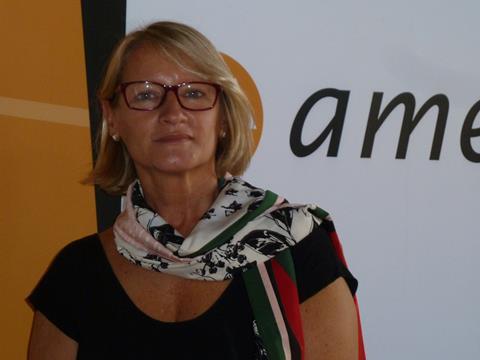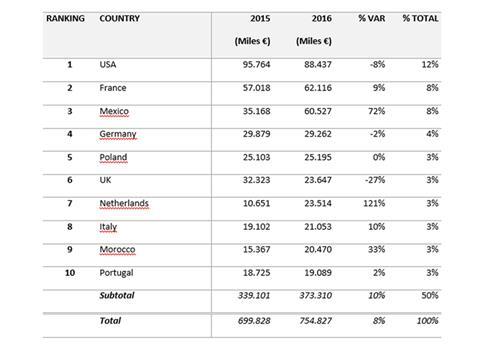
Another dynamic association supporting its industry at interpack is amec envasgraf – the Spanish Packaging Machinery Manufacturers Association, itself a branch of the venerable Association of Internationalised Industrial Companies (amec), created in 1969. Its members, mainly medium-sized industrial companies, enjoy a high international and innovative profile, often featuring in the pages of Packaging Europe. Director Carmina Castellà speaks to Tim Sykes.
Tim Sykes:
What is the role of amec envasgraf as an organisation?
Carmina Castellà:
Our aim is to help companies compete in a global market, creating a framework to enable constant competitive improvement, thus facilitating their internationalization and innovation.
TS:
What are your most important activities at the moment?
CC:
To Promote the presence of companies in overseas markets through activities and services adapted to the needs of the sector. After interpack we are still organising the Spanish participation on the following exhibitions: Expopack (Guadalajara, Mexico, June), Propak (Thailand, Bangkok, June), Pack Expo (Las Vegas, USA, September), Gulf Food Manufacturing (Dubai, November), and SWOP (Shanghai, China, November).
We will also organise other activities in order to generate networking, promote innovation, promote the internal market and provide training to companies of the sector.
TS:
Are there any particular issues you are promoting?
CC:
During interpack we will present an interesting tool in order to promote our companies and
their ‘WHO IS WHO IN THE PACKAGING SECTOR?’ in which you can select a product type (solid or liquid), packaging type (flexible or rigid), material, and a market sector, and you will be able to find the right process including the name of the manufacturers.
TS:
How would you characterise your membership? What are the particular strengths and characteristics of the Spanish packaging branch?
CC:
amec envasgraf’s member companies have a collaborative profile and international vision. We are dynamic, restless and willing to share their experiences and know how. The companies have taken advantage of these years of crisis to adapt the companies and the equipment that they are manufacturing to the current needs of the market.
They manufacture equipment with high technology, quality and good price, and some companies occupy positions of world leadership in their specialties. To highlight the capacity that they have to manufacture tailor-made solutions, according to the needs of the customer.
TS:
Are there any particular challenges facing your members at the moment?
CC:
I would say we face the same challenges that the global packaging industry is meeting, such as the commitment to sustainability, adapting to Industry 4.0, digitalisation, etc.
Today companies manufacture equipment taking into account pressures such as efficiency and productivity; increasing automation; automatic formatting changes; the need for more robotics; greater security; the need for more environmentally sustainable equipment. They are also looking to incorporate Hygienic Design in the food and pharmacy sectors. Equipment is also involved in improving the conditions of conservation of the product. And of course interconnectivity of equipment is playing an increasingly prominent role.
TS:
Speaking of interpack, what kind of representation of amec envasgraf members will visitors to the exhibition encounter?
CC:
There is an important participation of the Spanish companies at interpack: we have a total of 87 Spanish companies participating in 2017, covering an exhibition space of more than 5000 m2.
amec envasgraf will be coordinating the participation of 25 member companies. We give them the support on selection of space, advice on contracting supplies, logistics services (especially with regard the decoration and transport), marketing promotion (through the media, internet and during the exhibition) and networking among the participants.
interpack is the most important fair in the world in the packaging sector and of course it’s a ‘must’ event for the association's companies. We look forward to this appointment every three years, to present our equipment and our latest technological developments. It’s the perfect opportunity to meet clients, agents and distributors from countries around the world and share projects, trends and concerns with them.
TS:
The Spanish machinery sector is, as you mentioned, highly export-orientated. What proportion of its output leaves the Iberian peninsula, and what are your most important markets?
CC:
Indeed, Spanish manufacturers of Packaging Machinery export more than 60 per cent of their production. The main buying countries are shown in the table below.


















